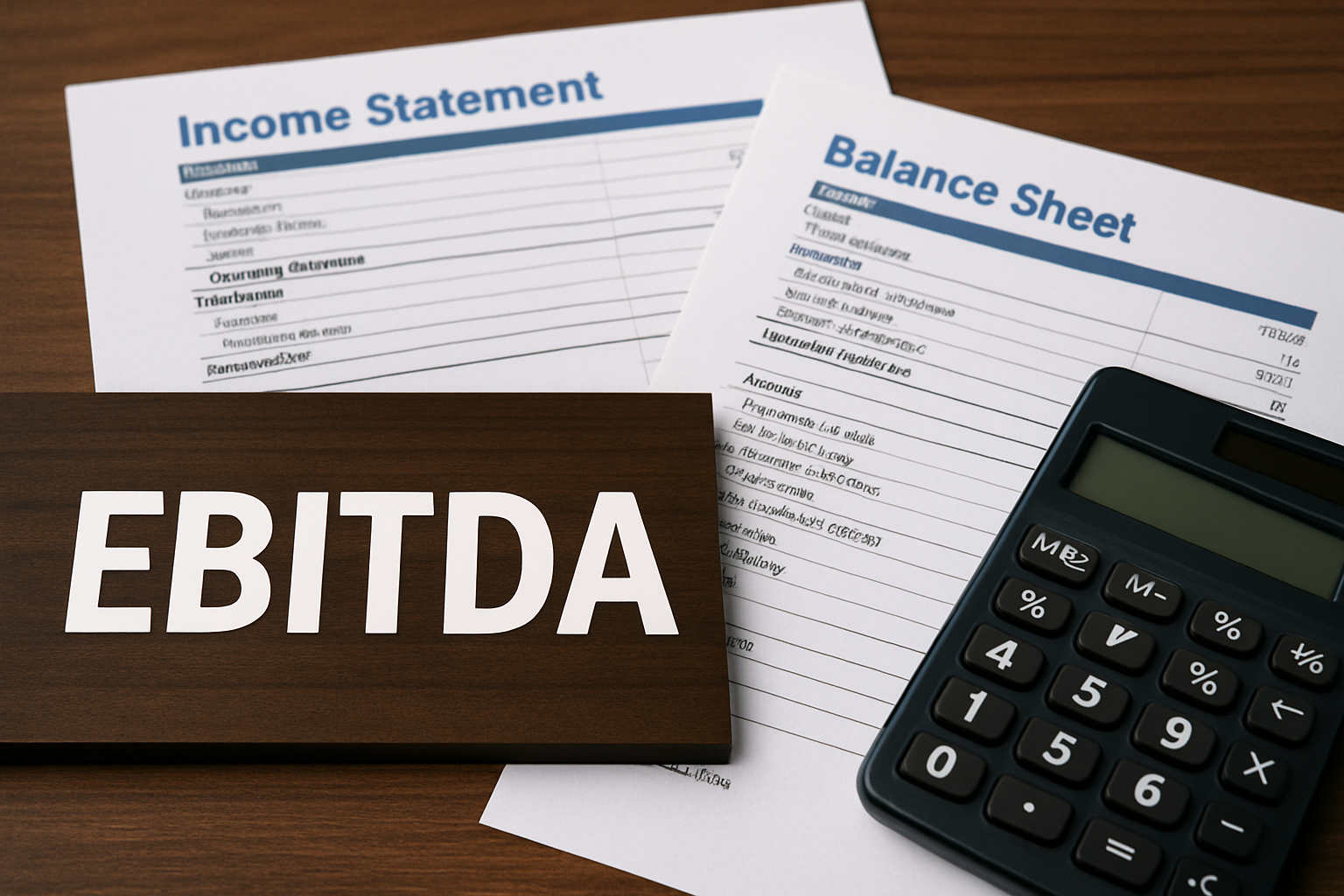Why a Small Business May Have Sales but No Cash

As a small business owner, you may have experienced a situation where your business is making sales, but you are still struggling to pay your bills or cover your expenses. This can be a frustrating and confusing experience, especially if you don't understand the underlying reasons for this cash crunch. In this blog post, we'll explore some of the reasons why a small business may have sales but no cash and what you can do about it.
1. High Overhead Costs
One of the main reasons why a small business may have sales but no cash is high overhead costs. Overhead costs are the expenses associated with running a business that are not directly tied to the production of goods or services. These include rent, utilities, salaries, and other administrative expenses. If your overhead costs are too high, they can eat into your profits and leave you with little cash on hand, even if your business is making sales.
Solution: Review your overhead costs and see if there are any areas where you can cut back. For example, you may be able to negotiate a lower rent or reduce your utility bills by being more energy-efficient. You can also consider outsourcing certain tasks or automating some of your administrative processes to reduce staffing costs.
2. Slow Cash Collections
Another reason why a small business may have sales but no cash is slow cash collections. Cash collections refer to the process of collecting payments from customers for goods or services that have been sold. If your customers are slow to pay, this can create a cash flow problem for your business, even if you are making sales.
Solution: Implement a clear and consistent invoicing and collections process to encourage prompt payment from your customers. Consider offering incentives for early payment or implementing penalties for late payment. You can also consider offering payment plans or installment options to make it easier for your customers to pay.
3. Inventory Management Issues
Inventory management is another factor that can lead to a situation where a small business has sales but no cash. If your business is carrying too much inventory, this can tie up your cash and leave you with little liquidity, even if your sales are strong. On the other hand, if you don't have enough inventory, you may miss out on sales opportunities.
Solution: Implement an inventory management system that tracks inventory levels and allows you to order new stock in a timely manner. Consider using a just-in-time (JIT) inventory system that minimizes the amount of inventory you need to hold at any given time. You can also consider offering discounts or promotions to encourage customers to buy excess inventory.
4. Seasonal Fluctuations
If your business is subject to seasonal fluctuations, this can also create a situation where you have sales but no cash. For example, if your business is busiest during the summer months, you may have to invest in inventory and staffing during the off-season, leaving you with less cash on hand.
Solution: Plan for seasonal fluctuations by creating a budget that takes into account the ebb and flow of your business. Consider using a line of credit or a business loan to help cover expenses during slower periods.
Conclusion
Having sales but no cash can be a frustrating experience for small business owners, but it's important to understand the underlying reasons for this situation. By identifying the factors that are contributing to your cash flow problems, you can take steps to address them and improve your financial situation. Whether it's reducing overhead costs, improving cash collections, implementing an inventory management system, or planning for seasonal fluctuations, there are a variety of solutions available to help you manage your cash flow and build a financially stable business.

If you’re running a Shopify-based business and you’re still not sure whether you should be using cash or accrual accounting, this is the breakdown you actually need.
The Basics: Cash vs. Accrual (Plain English)
Cash basis accounting means nothing touches your books until it touches your cash account. You don’t record a sale until the money shows up in your bank.
Accrual basis accounting means you record the transaction when it actually happens — not when the cash moves. If you ship a product today but don’t get paid for 30 days, you still record the sale today. You record it as accounts receivable, then swap that out for cash when it hits the bank.
What Works Best for E-Commerce
For most e-commerce businesses, the right answer is accrual— or at least a modified accrual system.
If you’re selling DTC and don’t have receivables, that’s one thing. But you do have inventory. And inventory is likely your single largest asset, and your biggest expense is the cost of that inventory when it is sold.
You also probably have accounts payable — vendor terms, delayed payments, etc. If you’re not recording those, you’re missing critical parts of your financial picture.
So even if you don’t have receivables, you still need accrual for payables and inventory. Without it, your books aren’t giving you the full story.
Why Cash Basis Gets Dangerous at 7 Figures
Once your business scales, the cracks in cash basis accounting start to show.
Say you start selling wholesale. Larger orders, delayed payments. If you’re not recording sales when they happen, your revenue is disconnected from reality.
Same thing on the inventory side. More sales means more inventory. More vendor terms. You need to know how much cash is tied up in product and what you owe vendors. You can’t track that without accrual accounting.
Sticking with cash basis when you’re at or above seven figures means you’rerunning a complex business on a bookkeeping method built for lemonade stands.
When Cash Basis *Might* Be Okay
There are rare cases where cash basis works. Usually it’swhen:
- Your inventory is homogenous (like bulk vintage clothing)
- You don’t sell wholesale or give customer terms (your customers pay when or before they get the items)
- You pay for inventory up front (no payables)
And even then, you’re limited in how much insight you can get. Cash basis meansyou only see what’s happening when the money moves — but a lot happens beforeor after that.
So yes, the IRS allows some businesses to expense inventory as they buy it —but for most e-commerce brands, accrual is the better long-term choice.
Still using cash basis accounting? Or unsure if your books actually reflect reality? Lonely, and just want to talk to someone? Book a call and let's chat!

If you’re running a Shopify-based business — or thinkingabout selling one — you’ve probably heard the term “EBITDA” thrown around. But what the hell is it actually measuring, and why does it matter? This post breaks it down in plain english.
What Is EBITDA (In Plain English)
EBITDA stands for Earnings Before Interest, Taxes,Depreciation, and Amortization.
It’s a way to measure the cash flow generated by the operations of the business, without the noise of non-operational accounting entries.
By backing out interest, taxes, depreciation, and amortization, you’re removing costs that aren’t directly tied to day-to-day operations and would look totally different under different ownership.
It gives you a number that reflects how much profit the business actually produces from operations — a useful way to compare performance across companies, time periods, or potential buyers.
Why EBITDA Matters If You're Selling (Or Scaling)
When you're valuing a business, one common method is toapply a multiple to EBITDA. A software company might be worth 20× EBITDA. A manufacturing business might go for 10× (bote these are just for illustration, please reach out if you want an actual range for your company).
The idea is to look at comparable businesses, what they sold for, and how that sale price relates to their EBITDA. Then you apply a similar logic to your business to get an estimate of what it might be worth on the open market.
Yes, there are other valuation methods — based on revenue, assets, and sometimes just hope and dreams. But EBITDA gives you a cash-based, semi-objective number you can work from.
Normalization vs. Manipulation
Let’s talk about a dirty little secret: most small business owners run some personal expenses through their business.
That conference in San Diego? You stayed three extra days. Did you reimburse the company? Probably not.
This is where “normalizing” EBITDA comes in. You add back expenses that technically hit EBITDA but aren’t really business-related or wouldn’t existunder new ownership — travel, meals, vehicle expenses, etc.
So is EBITDA manipulated? Sometimes, yeah — but it’s more often just adjusted to reflect the true economics of the business.
What founders *should* be worried about isn’t manipulation — it’s accuracy. Most small businesses don’t intentionally fudge their numbers — they just have sloppy books. Bad bookkeeping, unreconciled accounts, missing entries. That’s what really skews EBITDA.
How to Calculate EBITDA in a Shopify Business
Step one: clean your books. If your inventory, receivables,or payables are wrong, your EBITDA will be too.
For product-based e-commerce companies, COGS is your biggest expense and inventory is usually one of your biggest assets. If those aren’t tied out, the whole foundation crumbles.
Once your balance sheet is clean, identify any expenses that should be normalized — personal travel, car payments, anything that wouldn't show up under different ownership.
Then do the math:
- Start with Net Income from your P&L
- Add back Interest Expense
- Add back Income Taxes (not payroll taxes — only income-based taxes)
- Add back Depreciation
- Add back Amortization
That’s your EBITDA. It’s a measure of the business’s operational cash flow. And it’s only meaningful if your books are tight and your normalizations are honest.
Thinking about selling? Trying to get a real handle on cash flow? Afraid your books are a mess? Just want to chat and talk about sports? Book a call here


